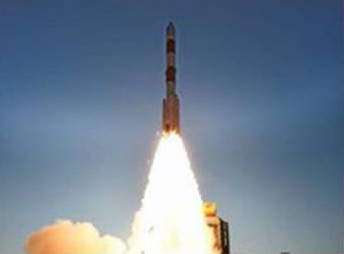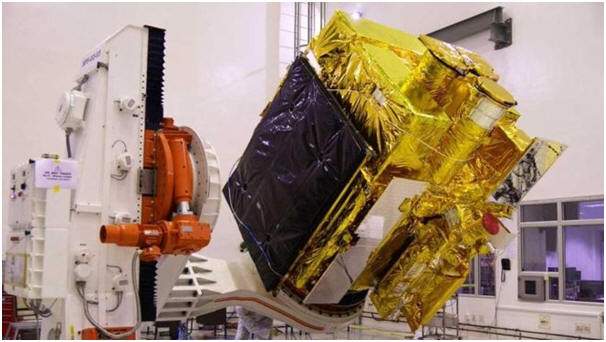INDIA
DEFENCE CONSULTANTS
|
WHAT'S
HOT? –– ANALYSIS OF RECENT HAPPENINGS |
|
Isro launches space observatory into orbit An IDC Report |
|
New Delhi, 03 October 2015
Astrosat, India's first astronomy observatory, will study distant celestial objects Indian Space Research Organisation (Isro) on Monday successfully placed India’s first observatory satellite Astrosat into orbit. Through this launch, India has joined the select group of countries that have their own space observatory satellites. · This is India’s first attempt at setting up an observatory in space, a place from where it can study cosmological phenomena. · The Mission is aimed at obtaining data that will help in a better understanding of the universe. · The Mission is to study astronomical phenomena. Astrosat is carrying five payloads, including an ultraviolet imaging telescope (UVIT). · Astrosat is generally described as India’s version of the Hubble telescope that NASA had put in space in 1990. But experts say it is not right to call Astrosat India's Hubble as the NASA version is 10 times heavier than Astrosat and is said to cost $2.5 billion, while India's satellite costs around Rs 180 crore. · Astrosat will put Isro in a very exclusive club of nations that have space-based observatories. Only the United States, European Space Agency, Japan and Russia have such observatories in space. · For the third time an Indian rocket will be launching seven satellites in a single mission. In 2008, Isro had launched 10 satellites in one go, including India's Cartosate-2A satellite.
Astrosat is designed to observe the universe in the visible, ultraviolet, low- and high-energy X-ray regions of the electromagnetic spectrum simultaneously with the help of its five payloads. As planned, the 320-tonne, 44.4-metre tall rocket, PSLV-C30, blasted off at 10.00 am sharp from Sriharikotta. The rocket, an XL variant of Isro's work horse Polar Satellite Launch Vehicle (PSLV), carried six other foreign satellites. This was the 31st flight for PSLV and 10th for PSLV XL version. Through 30 successful flights during 1994-2015 period, PSLV has launched 84 satellites. Twenty-two minutes into the flight, the rocket took Astrosat at an altitude of 650 km above the earth. Soon after, six other satellites were put into orbit and the whole mission ended in about 25 minutes. India has now joined the US, Japan, Russia and Europe, which have their own space observatory satellites. India will now be the first country from the developing world to have its own turbo-charged 'mini Hubble telescope' in space. According to experts, it will not be right to call Astrosat India's ‘Hubble’, launched by Nasa in 1990, because it is 10 times heavier than the Astrosat and is said to cost $2.5 billion. While the Hubble space telescope is still working now, Astrosat's life span is five years. PSLV-C30 with seven satellites cumulatively weighing 1,631 kg carried the Rs 178-crore Astrosat, India's first dedicated multi-wavelength space observatory. A unique feature of Astrosat is it will provide simultaneous multi-wavelength observation of various astronomical objects from a single satellite. Till now, Indian scientists had to rely on the telescopes operated by NASA and the European Space Agency to study 'radiation bands' that carry information about neutron stars, newly-born or exploding stars and the spiralling hot gases around black holes. Now they can study these using Astrosat’s telescope, Isro chairman A S Kiran Kumar said. “Today is an eventful day. This mission was not only looked within our country, but globally,” said Kumar. He added that Isro had spent almost a decade in developing this full-fledged astronomy satellite. For this, ISRO worked with multiple research institutions including Tata Institute of Fundamental Research, Indian Institute of Astrophysics, Inter-University Centre for Astronomy and Astrophysics and Raman Research Institute, which were involved in the payload development. Two of the payloads were in collaboration with Canadian Space Agency and University of Leicester, UK. According to Kumar, ISRO's missions have been either applications oriented or scientific in nature starting from the first Indian satellite Aryabhata, which was a scientific satellite, followed by scientific satellite missions such as SROSS and Youthsat. Chandrayaan-I and Mars Orbiter Mission (MoM) explored the Moon and Mars, respectively and MoM released images once in every 2.5 days. The pictures sent by MOM are used by students and scientists in various research activities. S Unnikrishnan Nair, project director at Isro, said Astrosat is Isro’s gift to the world. “Today, India has taken a giant technological lead and joined hands with the world to see that the mystery of universe is unwrapped.” K Suryanarayana Sharma, project director, Astrosat, said: “The satellite is doing fine after separation and the satellite centre has confirmed the intended auto operation that has to happen after separation, went well. The payloads will start commission one by one, starting from the eight day.” The two solar arrays of Astrosat were automatically deployed and the Spacecraft Control Centre at the Mission Operations Complex of Isro Telemetry, Tracking and Command Network at Bengaluru took control of Astrosat. Mylswamy Annadurai, director of Isro Satellite Centre in Bengalaru said PSLV has done its job. “The first deployment took place on Monday and in the next two months it will start complete operations.” Astrosat will observe the universe through optical, ultraviolet, low and high energy X-ray components of the electromagnetic spectrum, whereas most other scientific satellites are capable of observing through a narrow wavelength band. |

